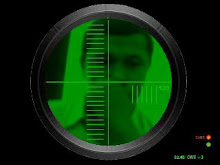Kerusakan data yang disebabkan oleh virus KSPOOLD adalah mengganti header dari file yang berextension DBF (Kalau file data dbf yg sudah diganti extensionnya, tidak diserang). Karena header setiap file dbf tidak sama ukurannya, ini tergantung dari jumlah field, maka untuk file yang jumlah fieldnya sedikit, virus bisa menyerang record. Hal ini diperhatikan karena disengaja oleh pembuatnya agar ukuran file tidak berubah. Untuk memperbaiki header file dbf yang rusak bisa dilakukan dengan bantuan utility UltraEdit yang dapat di download versi trial nya di :
http://www.tucows.com/preview/194610
Langkah perbaikan :
1. Buka file dbf yang rusak
2. Buka file yang masih baik dgn struktur yang sama dengan file yang rusak, atau buat file baru yang strukturnya sama dgn file yang rusak

http://www.4freeimagehost.com/resized/661e423da80b.jpg
3. Blok header data yang clean mulai dari batas header dgn record sampai ke awal file, klik
kanan pilih copy

http://www.4freeimagehost.com/resized/356df9b42c02.jpg
4. Blok header data yang rusak mulai dari batas antara header dgn record sampai awal file, klik kanan pilih paste

http://www.4freeimagehost.com/resized/b505b91753db.jpg
5. Simpan data yang rusak dgn cara masuk ke Menu, Pilih File lalu Save. Perbaikan data tahap pertama sudah selesai, hasilnya masih belum bisa dibaca oleh VFP, karena jumlah record yang tercatat pada data yang rusak tidak sama dengan yang di kopikan.
6. Perbaikan selanjutnya saya menggunakan tool yang berfungsi untuk memperbaiki header file dbf yg kerusakannya tidak parah dgn Tabel Repair Utility (Program Terlampir)
7. Klik Pilih File, cari file yang disimpan melalui UltraEdit, ini tampilannya
6. Perbaikan selanjutnya saya menggunakan tool yang berfungsi untuk memperbaiki header file dbf yg kerusakannya tidak parah dgn Tabel Repair Utility (Program Terlampir)
7. Klik Pilih File, cari file yang disimpan melalui UltraEdit, ini tampilannya

8. Klik Tombol Ganti Pada baris jumlah Recor
9. Klik Tombol Ganti Pada baris ukuran file
10. Bila File yg Anda Recover mempunyai Field Memo sedangkan file memonya tidak tersedia, ubah Table Flag menjadi Has CDX File, kemudian klik Ganti.
11. Klik Buka File ...untuk membuka file yang sudah di recover, pada bagian bawah terdapat record sampah, buang saja .. !
Data yang rusak sudah bisa diselamatkan.
Semoga dapat membantu.
Salam Fox Mania.
(Kutipan dari PaissiaP al. Ismuddin mailto:ismuddin@yahoo.com)

